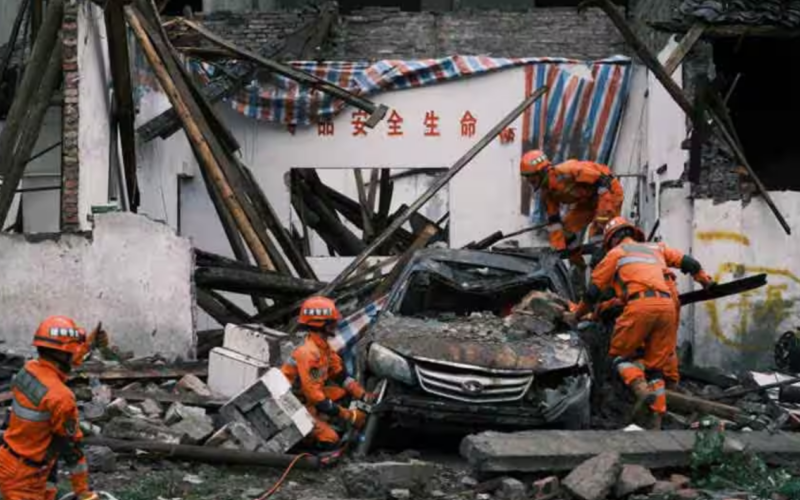In the aftermath of a powerful earthquake that has claimed the lives of more than 100 individuals, rescue operations are in full swing as emergency responders mobilize to address the immediate aftermath and provide assistance to those affected. The seismic event, which has left a trail of destruction in its wake, has prompted a rapid and coordinated effort to save lives, tend to the injured, and mitigate further risks in the affected regions.
The urgency of the situation has necessitated a comprehensive response from various emergency services and relief organizations. The earthquake, with its epicenter in a yet-to-be-disclosed location, has triggered a significant humanitarian crisis, demanding swift and efficient action to ensure the well-being of those caught in the disaster’s impact zone.
The scale of the tragedy has prompted a large-scale deployment of rescue teams equipped with specialized tools and resources to navigate through debris, collapsed structures, and other hazards. The priority is to locate and extricate survivors trapped under the rubble, a task that demands both precision and speed to maximize the chances of successful rescues.
As news of the earthquake spread, the international community has also expressed solidarity and offered support to China during this challenging time. Collaborative efforts between nations, relief agencies, and local authorities are crucial in ensuring a coordinated response that addresses the immediate needs of the affected population.
The devastation wrought by the earthquake extends beyond loss of life, with widespread damage to infrastructure, homes, and essential services. The immediate focus is on providing medical aid, shelter, and basic necessities to those displaced or affected by the disaster. Rescue teams are working tirelessly to establish temporary shelters, medical facilities, and logistics to ensure the efficient distribution of aid.
The gravity of the situation highlights the importance of disaster preparedness, early warning systems, and international cooperation in responding to such natural disasters. The aftermath of the earthquake serves as a poignant reminder of the need for ongoing efforts to enhance resilience and response capabilities to mitigate the impact of future seismic events.








